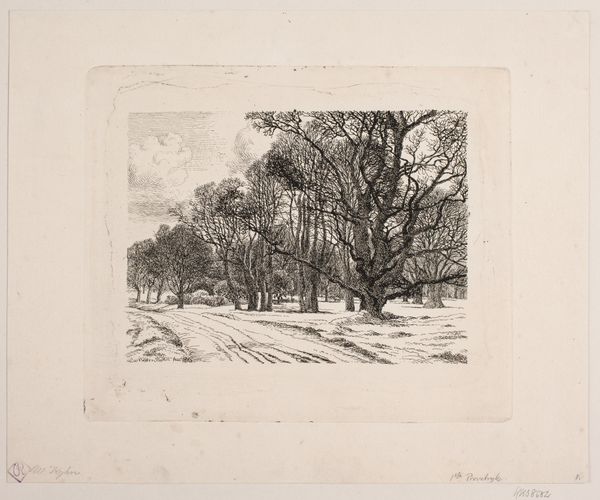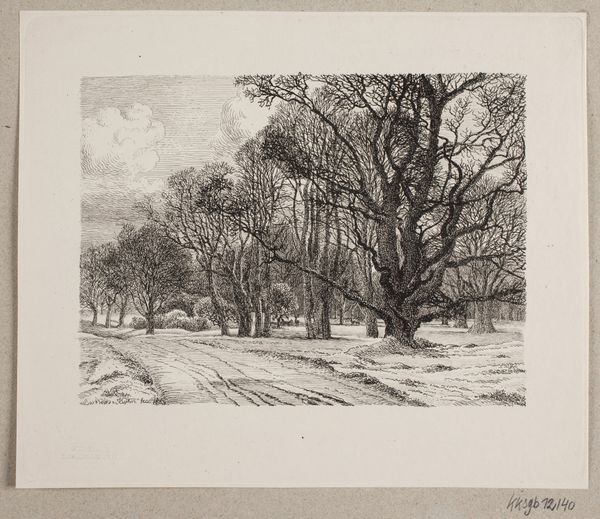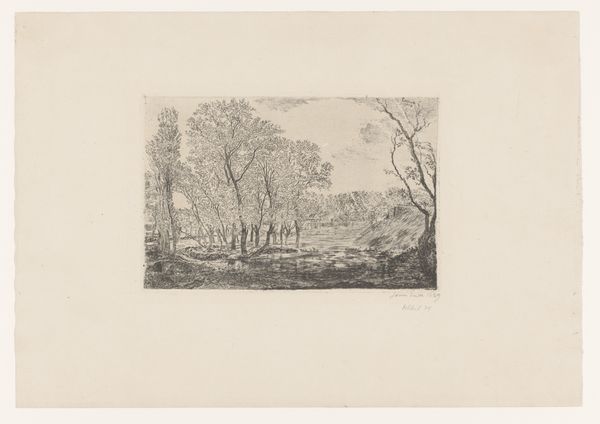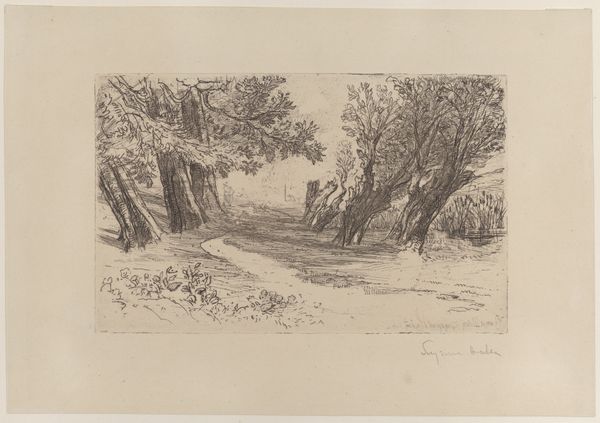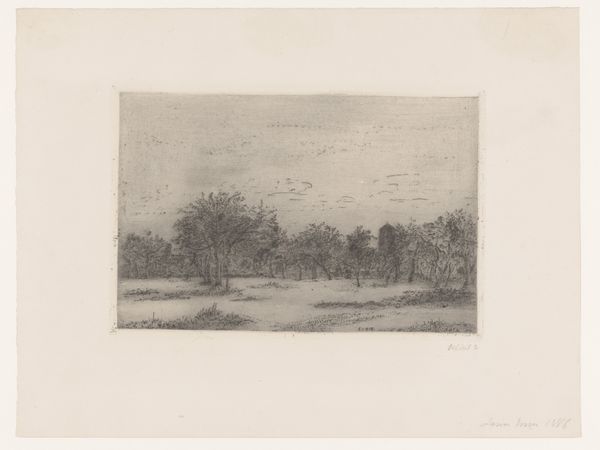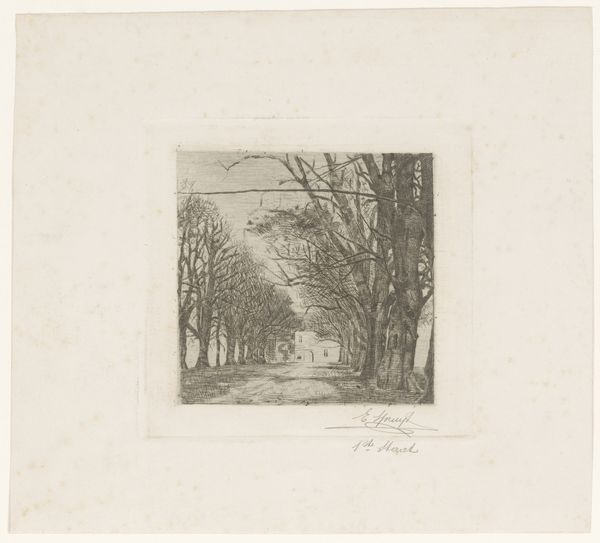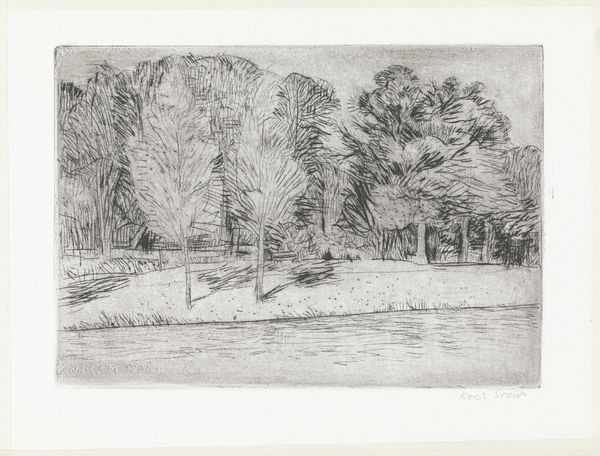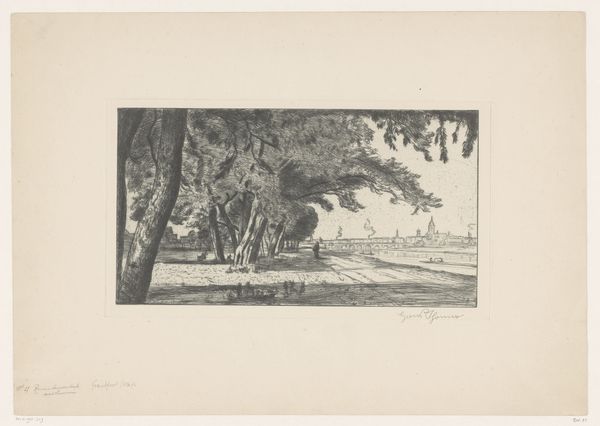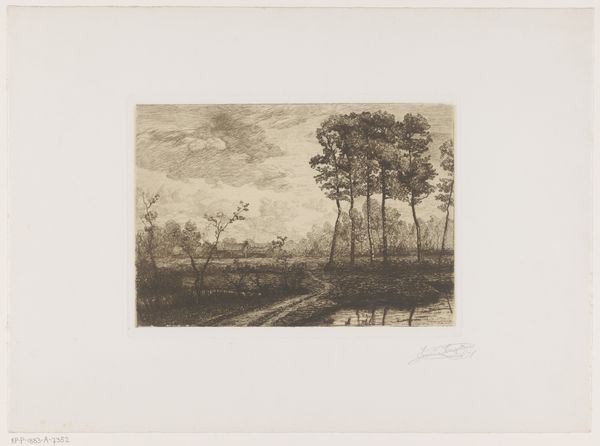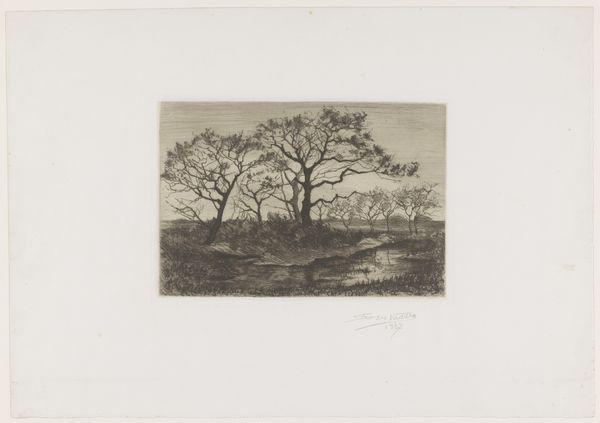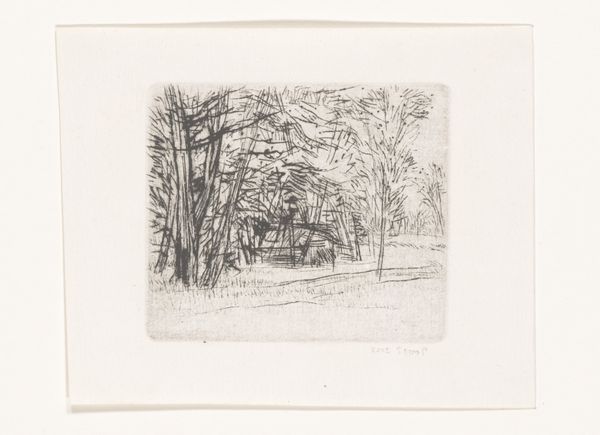
Dimensions: 186 mm (height) x 225 mm (width) (plademaal)
Editor: So, this is Vilhelm Kyhn's "Winter in the Woods," created in 1866. It's an etching, so it's printed on paper, and what strikes me is the incredible detail achieved with such a limited material palette. How do you interpret this work? Curator: From a materialist perspective, the choice of etching itself is significant. The process of etching, with its acid and metal plate, inherently democratizes image production, making it relatively reproducible compared to, say, oil painting. Think about the accessibility it offered to a wider audience than a unique painting ever could. Editor: That's interesting. So, it's less about the artistic skill, and more about the potential for distribution and consumption? Curator: Not exclusively, but that potential is undeniably central. The lines created by the etching process allowed Kyhn to depict the intricate bare branches, but also, crucially, the textural details of the snowy ground. Can you imagine how labor intensive it must have been to produce that plate? It challenges traditional notions of artistic skill – is it craft or fine art? Editor: I see what you mean! I guess I hadn't really considered the labour and resources embedded within the artwork itself. Where was the paper sourced? How were the etching tools made? Curator: Exactly. And what impact did the consumption of prints like this have on the broader landscape of artistic production and the public's understanding of the natural world? Were these images primarily for wealthy patrons, or were they part of a growing visual culture accessible to a broader segment of society? What social strata is represented in this depiction of a "Winter in the Woods?" Editor: So it's really about thinking beyond the image and digging into the 'stuff' behind it? Curator: Precisely! This gives a whole new perspective. We have to reflect on where these objects come from, who makes them, and where they go. Editor: That's really changed how I see it. I'm now thinking about all the invisible hands involved in making this artwork possible, not just Kyhn's!
Comments
No comments
Be the first to comment and join the conversation on the ultimate creative platform.
